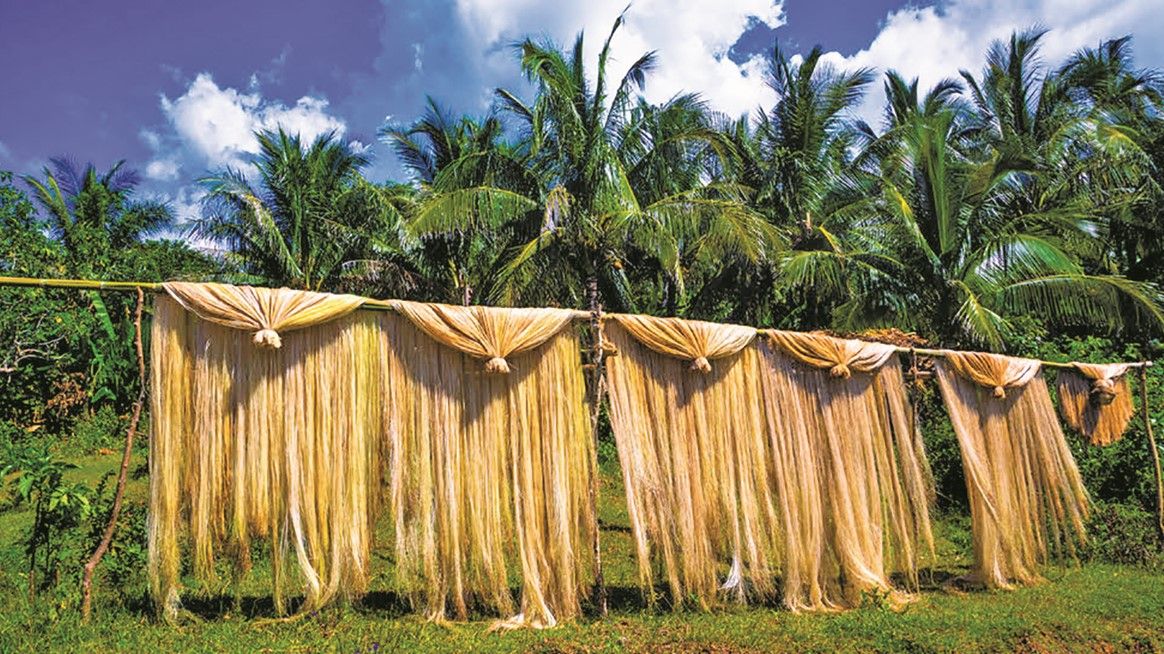Bicol's Abaca, a hit at Tokyo Lifestyle Week
How a local textile made international waves in Japan
“Did you know that abaca comprises 40 percent of the Japanese currency?” asked Med Villanueva of Shelmed Cottage Treasures and the Philippine Exporters Confederation (Philexport) in Bicol. Abaca, also known as Manila hemp, is the world’s strongest natural fiber and remains one of the country’s top exports, with Philippine abaca making up 85 percent of the world’s supply and bringing in $80 million annually. Villanueva posed this question during the Bicol Region’s participation in the latest Tokyo Lifestyle Week, a prestigious expo held in Japan, renowned as the world’s leading trade fair for all things lifestyle. She and a number of creative businesses were in Japan to showcase what the Bicol region can bring to the international lifestyle space.
At Tokyo Lifestyle Week, Bicol’s booth was a vibrant showcase of how tradition meets innovation. Leading the delegation was Department of Trade and Industry’s (DTI) regional director Dindo Nabol who, working with the Philippine Trade and Investment Center Tokyo, arranged for business-to-business meetings and market sensing activities for the artisans.

As the fair buzzed with exhibitors and visitors from Japan and around the globe, some were drawn to the colorful products that embodied a perfect blend of tradition and innovation. The focus was clear: showcase the versatility of abaca and celebrate its rich heritage. Villanueva, alongside other Bicolano artisans and entrepreneurs, highlighted how this remarkable fiber has evolved from a traditional material into a modern marvel.
Villanueva elaborated on the enduring relationship between the Philippines and Japan regarding abaca. “The relationship between our countries has been very enriching, especially on the abaca fiber,” she explained. “The concentration of the Japanese government in its initial talks with the Philippines with regards to abaca dates back to the 1950s when they first showed interest in cottonized abaca – the abaca we made into textile.” Although the Philippines was not fully prepared to meet these demands at the time, the groundwork laid then has paved the way for today’s thriving industry. Japanese investments in the abaca industry and even long-standing partnerships with companies producing abaca pulp have endured for decades.
Among those that took part in the fair was fashion designer Iris Ceneta with her luxury fashion brand Ha-Bi. Dedicated to sustainability, producing handcrafted garments with naturally sourced colors, and working with the region’s grassroots, Ceneta has been creating a fair trade ecosystem that produces modern pieces using traditional material. The pinukpok or abaca silk fabric is her favorite material and she hopes the Japanese market would appreciate its quality and beauty. “We brought in pieces that come in silhouettes and colors that are popular among the Japanese market while maintaining a Filipino identity through the use of our traditional material,” she said. “I wanted the pieces to appeal to a broad market without losing its identity.” Oversized pieces in natural pastels, flowy tops, and colorful skirts made up Ceneta’s display.
Bags by Bernadette De Los Santos’ Bidibidi, which are produced in the quiet town of Baao in Camarines Sur, were also present. Drawing in buyers due to their distinct, colorful embroidery. Villanueva’s Shelmed Cottage Treasures and another brand called Ruyag brought their fresh takes on the Japanese bento bags using abaca. With woven raffia bags being a staple in Japanese summer looks, Ness Crafts, JM Handicrafts, RCB Crafts, and Starcrest Asia’s woven and braided bags made of abaca provided a more durable yet equally fashionable option to buyers. But while abaca might’ve been the most prominent material in the booth, there was also Rodeo Leathercrafts Bags and Wallets with their leather goods, A. Teves Enterprises with their wooden, functional decor, Cataniugan Handy Crafts, Coco Technologies, Biday’s Bagol Handicraft, and Avicrafts & Styles accessories made out of natural materials.
Villanueva shared that a main concern among Japanese buyers at the moment is the weak yen, but she’s confident that its value will soon start climbing back up. “What goes down must eventually rise again–that’s always been the trend. But we’re happy that they’re not letting the opportunity pass to get to know the products now and start laying the groundwork for business.”
The DTI has also arranged market sensing activities during this trip for the delegation which would bring them to various markets and retailers, allowing them to get to know the Japanese market better and get inspiration for future products. It’s also an opportunity for the artisans and businesses to reintroduce and renew the interest in abaca to the market. Something Villanueva is really excited for. “There’s just so many things you can do with abaca. From braiding, twisting, crocheting, you name it, you have it. What will limit it is your imagination.”